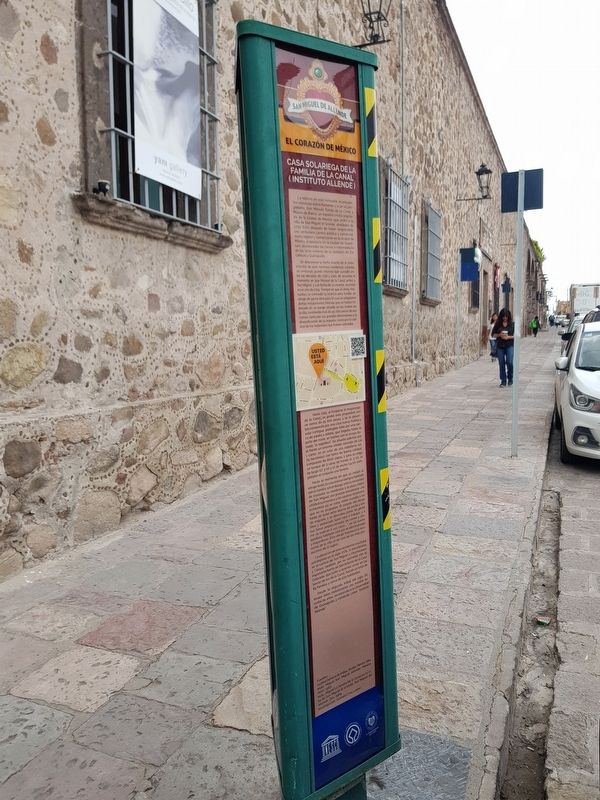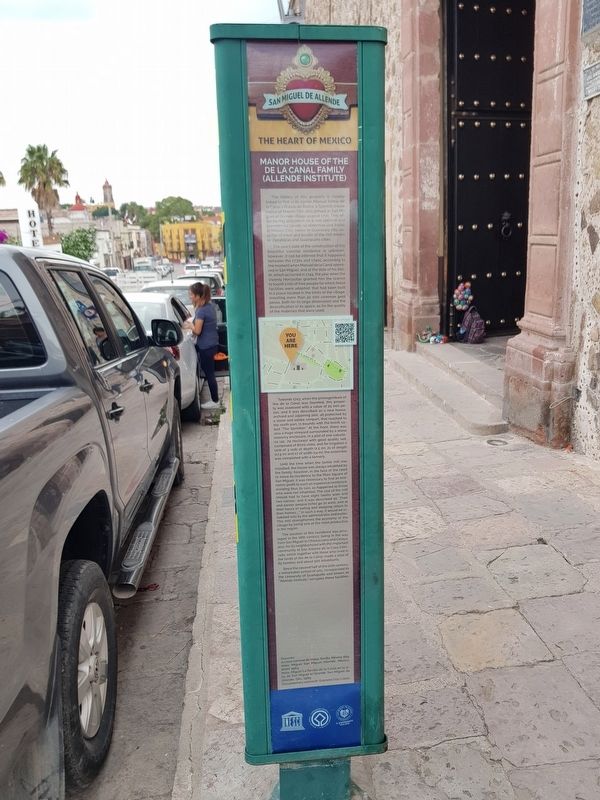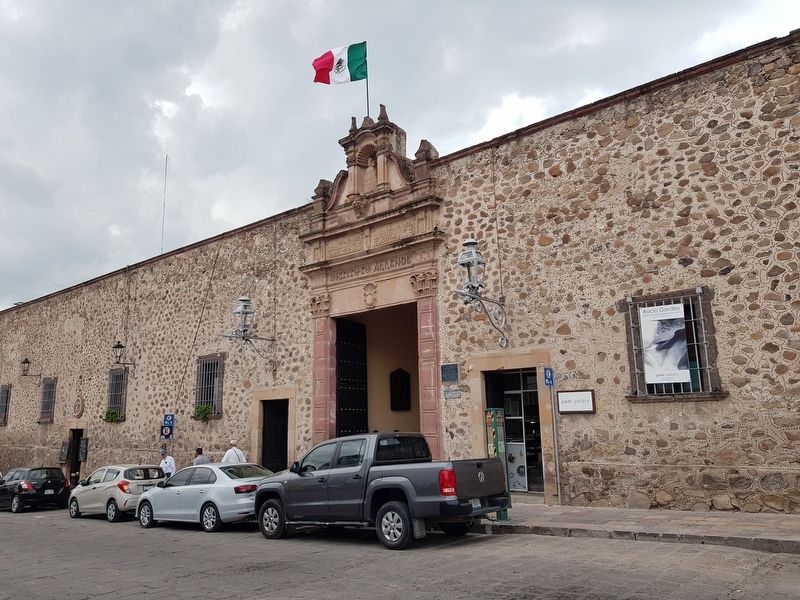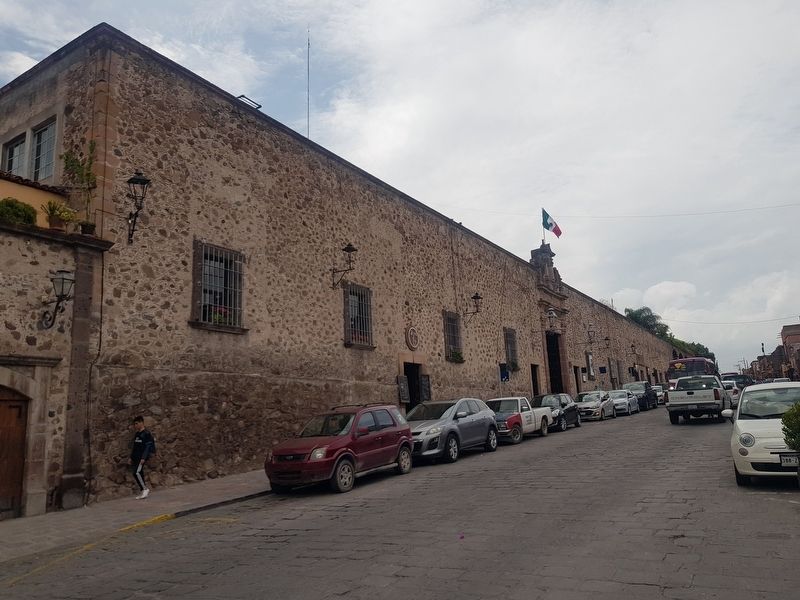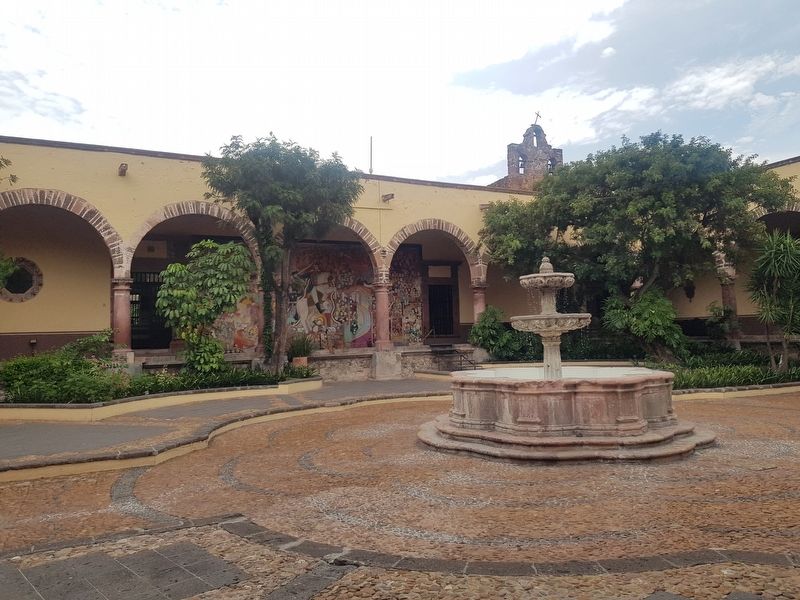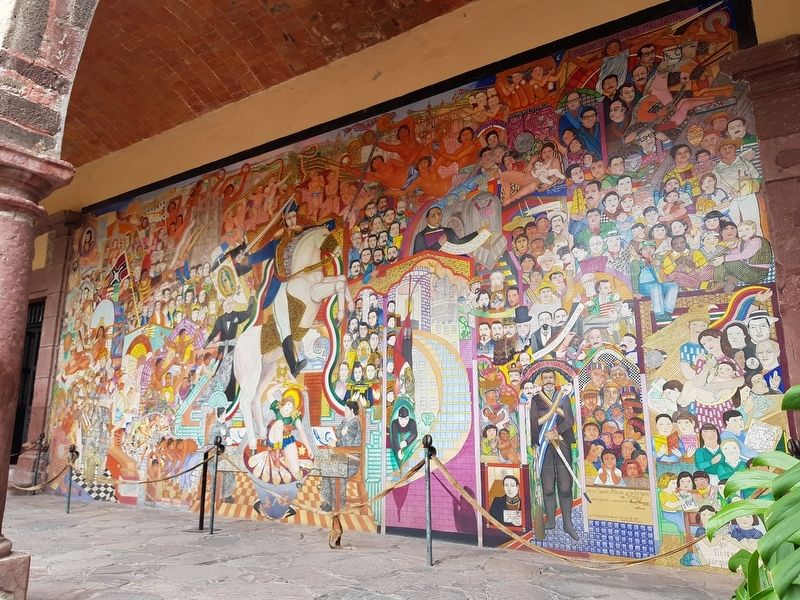San Miguel de Allende, Guanajuato, Mexico — The Central Highlands (North America)
Manor House of the de la Canal Family (Allende Institute)
San Miguel de Allende - El Corazón de México
Inscription.
La historia de este inmueble se encuentra vinculada estrechamente a la de su propietario, Don Manuel Tomás de la Canal y Bueno de Baeza, un español criollo originario de la ciudad de México, que arribó a la villa de San Miguel el Grande, alrededor de 1730. Esto, después de haber emprendido una verdadera carrera politica y comercial como regidor y comerciante en la ciudad de México, propietario en la ciudad de Querétaro, abastecedor de carnes e intermediario de los ricos mineros de las ciudades de Zacatecas y Guanajuato.
Se desconoce la fecha exacta de la construcción de esta hermosa residencia colonial, sin embargo, puede inferirse que sucedió entre las décadas de 1730 y 1740, de acuerdo al momento en que Manuel de la Canal arribó a San Miguel y a la fecha de su muerte, ocurrida en el año de 1749. Tiempo en que el Virrey Horcasitas, le concedió la licencia para fundar un obraje de gente libre para lo cual se adaptaron dichas instalaciones; mismas que se habían, fabricado en un paraje situado en los límites de la villa, invirtiendo más de 40,000 pesos de oro común, tanto por sus grandes dimensiones y la diversificación de su espacio, como por la calidad de los materiales que fueron utilizados.
Hacia 1743, al fundarse el mayorazgo de la Canal, se grabó esta propiedad con un censo de 25000 pesos, y se le describía compuesto por una casa nueva, huerta y solar contiguo, protegido todo por una cerca de piedra y adobe, que llegaba hasta la parte del norte, en límites con el arroyo llamado “la regadera”. Se situaba además por el frente un enorme viñedo cercado de cal y canto, en un solar de una caballería (42.79 hectáreas) con tierra de buena calidad, compuesto de 8000 cepas, y para su riego un tanque de 3 varas de hondo (2.5 m), 21 de largo (17.5 m) y 17 de ancho (14 m); completaba el conjunto una tenería.
Hasta el momento en que se instaló el obraje textil, la casa estuvo siempre habitada por la familia, sin embargo ante la necesidad de trasladar su residencia a la plaza mayor de San Miguel, era preciso encontrarle una utilidad económica a tan costosa residencia, evitándole así su ruina, como sucedía a las que no se ocupaban. El tamaño del obraje había de tener ocho telares de ancho y dos de angosto, y se describía como: “de gente libre y asalariada que vaya a trabajar, y a sus horas proporcionadas de comer y dormir se vuelvan a sus casas…”, de tal suerte, quedaría habitado solo por el administrador
y mayordomo. Este obraje fortaleció la economía de la villa al ser uno de los más productivos de la región.
La ubicación de esta residencia resultaba privilegiada en el siglo XVIII, al encontrarse en el camino de San Miguel a Chamacuero y Celaya; también, por su vecindad con el importante barrio de San Antonio de la Casa Colorada, que junto a quienes vivían en las tierras de los de la Canal, hacían un total de 65 familias y cerca de 500 habitantes.
Desde la segunda mitad del siglo XX, ocupa estas instalaciones una notable escuela de artes, incorporada a la Universidad de Guanajuato y conocida como “Instituto Allende”.
Fuentes:
Archivo General de Indias, Sevilla: México, 664. Malo, Miguel San Miguel Allende, México, INAH, 1963.
Malo, Miguel La familia de la Canal en la villa de San Miguel el Grande. San Miguel de Allende, Gto., 1969.
Investigación: Graciela Cruz López
Manor House of the de la Canal Family (Allende Institute)
The history of this property is closely linked to that of its owner, Manuel Tomás de la Canal y Bueno de Baeza, a Spanish creole native of Mexico City, who arrived at San Miguel el Grande village around 1730. This, after having embarked on a real political and commercial career, as alderman and trader in Mexico City, owner in Queretaro
city, supplier of meat and broker of the rich miners in Zacatecas and Guanajuato cities.
The exact date of the construction of this colonial residence is unknown, however, it can be inferred that it happened between the 1730s and 1740s, according to the moment when Manuel de la Canal appeared in San Miguel, and at the date of his death, which occurred in 1749, the year when the Viceroy Horcasitas granted him the license to found a mill of free people for which these facilities were adapted; that had been built in a place located in the limits of the village, investing more than 40000 common gold pesos, both for its large dimensions and the diversification of its space, as for the quality of the materials that were used.
Towards 1743, when the primogeniture of the de la Canal was founded, this property was assessed with a value of 25000 pesos, and it was described as a new house, orchard and adjoining plot, all protected by a stone and adobe rampart, that reached to the north part, in bounds with the brook called “The Sprinkler.” At the front, there was also a huge vineyard surrounded by a stone masonry enclosure, in a plot of one cabellería (42.79 hectares) with good quality soil, composed of 8000 vines, and for irrigation a tank of 3 rods of depth (2.5 m), 21 of length (17.5 m) and 17 of width (14 m); the ensemble was completed with a tannery.
Until
the time when the textile mill was installed, the house was always inhabited by the family; however, in the face of the need to move its residence to the Main Square of San Miguel, it was necessary to find an economic profit to such an expensive residence, avoiding thus its ruin, as happened to those who were not inhabited. The size of the mill should had to have eight looms wide and two narrow, and it was described as, “Free and earner people who go to work, and at their hours of eating and sleeping return to their homes…” in such a way, it would be inhabited only by the administrator and butler. This mill strengthened the economy of the village by being one of the most productive in the region.
The location of this residence was privileged in the 18th century, being in the way from San Miguel to Chamacuero and Celaya; also, for its neighborhood with the important community of San Antonio de la Casa Colorada, which together with those who lived in the lands of the de la Canal, made a total of 65 families and about 500 inhabitants.
Since the second half of the 20th century, a remarkable school of arts, incorporated to the University of Guanajuato and known “Allende Institute,” occupies these facilities.
Sources:
Archivo General de Indias, Sevilla: México, 664. Malo, Miguel San Miguel Allende, México, INAH, 1963.
Malo,
Miguel. La familia de la Canal en la villa de San Miguel el Grande. San Miguel de Allende, Gto., 1969.
Documentary research: Graciela Cruz López
Erected by El Honorable Ayuntamiento de San Miguel de Allende y UNESCO.
Topics. This historical marker is listed in these topic lists: Colonial Era • Industry & Commerce • Man-Made Features. A significant historical year for this entry is 1730.
Location. 20° 54.566′ N, 100° 44.815′ W. Marker is in San Miguel de Allende, Guanajuato. Marker is on Calle Ancha de San Antonio just north of Orizaba, on the right when traveling north. Touch for map. Marker is in this post office area: San Miguel de Allende GTO 37700, Mexico. Touch for directions.
Other nearby markers. At least 8 other markers are within walking distance of this marker. María Josefa Lina de la Canal y Hervas (here, next to this marker); The Parish of Saint Anthony of Padua (approx. 0.4 kilometers away); Allende Fountain (approx. 0.4 kilometers away); General Pablo Yáñez (approx. 0.4 kilometers away); Villa Zacateros (approx. 0.4 kilometers away); Armory of the Insurgents (approx. 0.4 kilometers away); José Mojica (approx. half a kilometer away); The House of Luis Malo (approx. half a kilometer away). Touch for a list and map of all markers in San Miguel de Allende.
Credits. This page was last revised on September 1, 2020. It was originally submitted on October 6, 2019, by J. Makali Bruton of Accra, Ghana. This page has been viewed 450 times since then and 66 times this year. Photos: 1, 2, 3, 4, 5, 6. submitted on October 6, 2019, by J. Makali Bruton of Accra, Ghana.
